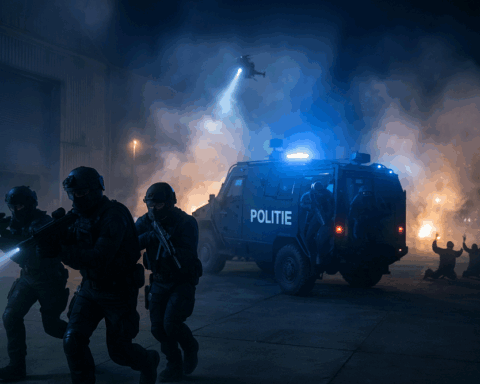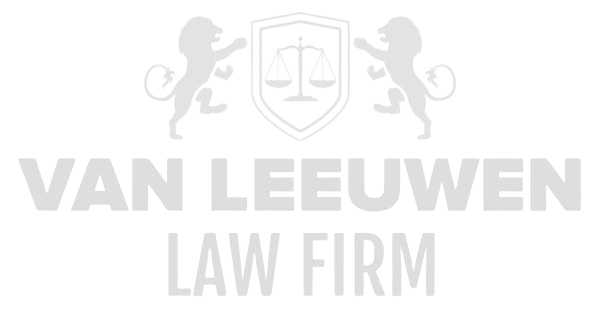The instrument of issuing an order to parents or guardians of children under twelve represents one of the most significant preventive powers granted to the mayor in the context of maintaining public order and safety within municipal boundaries. The legislature has established a legal foundation through Article 172b of the Municipalities Act, enabling local authorities to intervene when recurrent disruptive behavior by minors is observed, and when there is a serious concern about the potential escalation of such behavior. This measure is explicitly aimed at children who have already developed a pattern of undesirable conduct in public spaces, weighing the interests of society and the protection of vulnerable citizens against the fundamental rights of parents to raise their children. The order is therefore not merely an administrative formality but a carefully calibrated legal instrument intricately connected to broader policy objectives regarding the enforcement of public order, the prevention of undermining behaviors, and the protection of social cohesion within neighborhoods and communities.
The preventive nature of Article 172b reflects a clear shift in enforcement strategy: the focus is not primarily on sanctioning, but on intervening to prevent escalation before criminal interventions become necessary. This involves a delicate interplay between family intervention and public safety, with the mayor functioning as the central authority, balancing both the interests of the child and the community. By issuing an order, authorities can intervene in time to prevent behavior that structurally disrupts public order, thereby reducing potential harm to others. In certain cases, the effects of non-compliance are tangible; citizens can be directly impacted by repeated disruptive behavior, ranging from intimidation to physical or material damage. In this context, the order is not merely an administrative step but a legal and policy response to concrete risks within society.
Legal Framework and Authority
The legal framework for the order to parents of children under twelve is enshrined in Article 172b of the Municipalities Act, which explicitly grants the mayor the authority to act preventively against recurrent disruptive behavior by minors. This provision complements existing instruments for maintaining public order, as set out in Articles 172 and 174 of the same Act, emphasizing the mayor’s central role as the guardian of local safety. The legal design of this article aims to balance the freedom of parental upbringing with the societal necessity of safeguarding public order. The legislature deliberately chose a measure that intervenes at the family level without immediately resorting to the most intrusive child protection measures, such as removal from the home or intensive family interventions.
Application of Article 172b implies that the mayor has considerable discretion in determining when the seriousness of a situation justifies issuing an order. This requires a systematic and documented analysis of the child’s behavior, prior incidents, and the context in which they occur. The order is specifically intended for children who repeatedly disrupt public order and cannot be applied to first-time offenders. This limitation underscores the preventive, rather than punitive, nature of the authority: it focuses on escalation control and risk prevention rather than imposing a sanction based on an isolated incident.
Additionally, the legal framework ensures that the order is always proportionate to the severity of the disruption and the specific circumstances of the child and the family. It explicitly documents the responsibilities of parents or guardians and attaches the obligation for supervision and compliance. The mayor retains the ability to apply the order regionally or municipally, making it a complement to broader local safety and enforcement strategies. The framework also provides parameters for the duration, adjustment, and revocation of the order, ensuring proportionality and flexibility.
Purpose of the Order
The purpose of the order to parents or guardians of children under twelve extends to preventing further escalation of undesirable behavior in public spaces, focusing on protecting citizens, safeguarding public order, and minimizing the risk of harm or injury to third parties. This instrument is designed not as a criminal measure but as a preventive tool to prevent recurrence of disruptive behavior. It targets situations in which children repeatedly and systematically disrupt public order, and where there is a serious concern that this behavior will continue or worsen.
The order also aims to reinforce the role of parents or guardians by explicitly holding them responsible for supervising and guiding their child. The legislature recognizes that parents are a crucial link in preventing undermining behaviors and avoiding the escalation of risky conduct. By legally assigning them responsibility, the preventive nature of the instrument can be fully realized. The order also serves as a signaling function: it alerts parents to the seriousness of the situation and encourages timely intervention before the child’s behavior leads to harmful incidents.
The order has an important policy dimension as well: it aligns with local enforcement strategies, youth policy, and social interventions aimed at reducing juvenile nuisance and strengthening community safety. By explicitly linking it to a broader youth policy approach, it prevents individual cases from being treated in isolation, allowing for a structural improvement of public order. The measure is deliberately temporary and limited, enhancing the proportionality and effectiveness of the instrument.
Content of the Order – Supervision of the Child
The order may require parents or guardians to ensure that the child does not enter certain areas without the accompaniment of a parent or designated guardian, and that the child refrains from being in publicly accessible places at specific times or on certain days. The purpose of this restriction is twofold: it minimizes the risk of repeated disruptive behavior while protecting the child from situations where they or others may be at risk. The legal formulation of the order requires clear identification of prohibited locations and times, as well as the responsible parent or guardian.
The order may also allow for the appointment of up to two additional supervisors, providing flexibility in implementation and enabling parents to practically fulfill the measure. The preventive nature of the measure implies that the order must always be proportionate and targeted, with explicit reference to the specific behaviors that triggered it. The order can be issued orally or in writing, but written documentation is essential for legal clarity and oversight of compliance.
Finally, the order emphasizes collaboration between parents or guardians and authorities. It is not merely restrictive but creates a framework in which parents are actively involved in guiding the child’s behavior. Parental involvement is critical to the instrument’s success, as compliance can only be effective if supervision is actively maintained and preventive guidance is provided.
Duration and Validity of the Order
The order is always temporary and applies for a maximum of three months, with the possibility for the mayor to adjust or revoke it during that period. This timeframe is deliberately short to ensure proportionality and subsidiarity, preventing parents from being unduly restricted in their upbringing. The limited duration also allows for evaluation of the order’s effectiveness and adjustments if the child’s behavior changes or family circumstances significantly improve.
During the period of validity, the mayor may grant exemptions in specific cases, for example, if parents demonstrate that adequate alternative measures have been taken or if exceptional circumstances make strict compliance unreasonable. This flexibility reinforces the preventive nature of the instrument, emphasizing that the primary goal is not punishment but steering and preventing undesirable behavior.
The temporal aspect of the order also supports administrative efficiency for the municipality, as temporary measures require less complex procedures than prolonged interventions or formal child protection cases. At the same time, the instrument provides a clear legal framework in which parents understand what is expected of them, while authorities are empowered to monitor compliance effectively and consider appropriate follow-up actions in the event of violations.
Criteria for Application
The application of the order to parents or guardians of children under twelve is strictly bound by specific criteria, as established in Article 172b of the Municipalities Act. First and foremost, there must be repeated disruptive behavior by the child in a public context. This behavior can occur individually or in groups and must be demonstrably documented, for example through prior reports to the police or municipality or through recorded incident reports. It is essential that the child is not a first-time offender; the legislator deliberately limited the order to cases where there is a pattern of behavior that poses a real threat to public order and safety, ensuring that intervention is both proportional and targeted.
Furthermore, the law requires a serious concern for further disruption of public order. This means the mayor cannot lightly decide to impose an order; there must be objective signals indicating a high risk that the child will cause further disturbances. These signals may range from consistent acts of vandalism and aggressive confrontations to significant disruption of social peace in neighborhoods. The assessment is grounded in both legal and factual considerations, taking into account previous incidents, contextual factors such as family circumstances, and the level of supervision provided by parents or guardians.
The order is applied exclusively in public spaces, focusing on behavior that directly affects the wider community. The mayor must carefully consider whether the order is appropriate within the broader framework of youth policy and local safety strategies. The objectivity of the assessment, linked to tangible risks, ensures that the order is not imposed arbitrarily but functions as a preventive measure, intervening in time before escalation leads to injury, material damage, or severe undermining of public order.
Supervision and Enforcement
Primary responsibility for supervising and enforcing the order lies with the child’s parents or guardians. They bear the legal obligation to ensure that the child complies with the restrictions imposed. This includes not only preventing the child from entering prohibited areas or being outside at specific times, but also actively guiding the child’s behavior to prevent recurrence of disruptive actions. The mayor’s role is supervisory and coordinative; he or she can monitor compliance and, where necessary, involve police or other enforcement agencies to ensure effective execution of the order.
Enforcement is primarily preventive in nature and does not constitute a criminal sanction. In cases of noncompliance, the mayor may consider additional measures, such as reassessing the order or referring the case to social interventions or youth services. Documentation and registration of orders and their compliance by the municipality is essential to ensure the legality and effectiveness of the measure. Cooperation with schools, neighborhood mediation programs, and other social partners can strengthen supervision and guidance, creating an integrated approach to managing risk behavior.
Implementation of supervision requires a carefully calibrated approach. Flexibility is needed depending on the local context, the severity of the child’s behavior, and the ability of parents or guardians to actively oversee compliance. The overarching goal remains preventive: to prevent the child from causing harm to themselves, others, or public order, while simultaneously enabling parents to exercise their educational responsibilities effectively.
Mayor’s Authority to Modify or Revoke
The mayor has the authority to modify the order during its duration, revoke it entirely, or grant exemptions in specific cases. This authority is crucial to ensuring proportionality and subsidiarity, allowing the order to remain aligned with the child’s and family’s current circumstances. For example, if the child’s behavior changes significantly or there are conditions making strict compliance unreasonable, the mayor can adjust the decision.
Modification and revocation are also necessary to maintain the order’s preventive character. By incorporating flexibility, parents are not unnecessarily burdened, while protection of public order and safety is maintained. The procedure for modification or revocation requires careful consideration, involving parents or guardians and providing a written justification. This ensures transparency, legality, and adherence to proper administrative procedures.
In exceptional circumstances, the mayor may grant exemptions for specific situations, such as when alternative measures can demonstrably achieve the same preventive effect. This highlights that the order is not a rigid tool but a flexible legal instrument, adaptable to the unique circumstances of individual cases, while keeping the strategic objective of protecting public order and preventing undermining at its core.
Role of Parents or Guardians
Parents or guardians are central to the implementation of the order and bear primary responsibility for compliance. The order explicitly positions them to guide the child’s behavior, monitor prohibited actions, and, if necessary, appoint additional supervisors to implement the measure. This responsibility covers all times and locations described in the order and includes both direct enforcement and active guidance to prevent recurrence of undesirable behavior.
Parental or guardian involvement is essential for the order’s effectiveness. Without active cooperation, the preventive measure may fail, putting not only the child but also citizens and the local community at risk from repeated disruptive behavior. The order reinforces the role of parents as educators and responsible parties for ensuring safety and order, while keeping them informed of the legal consequences of noncompliance.
Parents and guardians operate within a legal framework that respects their rights while imposing clear obligations. This creates a balance between family autonomy and social responsibility, with the shared objective of preventing escalation of behavioral problems and protecting public order, as well as the well-being of both the child and the wider community.
Objection and Appeal
The order directed at the parents or guardians of children under twelve is classified as a decision within the meaning of the General Administrative Law Act (Awb). This classification grants parents or guardians the right to lodge an objection against the issued order, allowing their position to be legally reviewed. The written justification for the order is essential; the document must clearly indicate which behaviors or circumstances prompted the measure, what objectives the order seeks to achieve, and the legal grounds upon which the decision is based. Transparency in this process ensures that the order is applied neither arbitrarily nor disproportionately.
Moreover, the Awb provides a framework for hearing both sides, to the extent that this is practically feasible. Parents or guardians must be given the opportunity to present their views, thereby balancing preventive enforcement with the legal protection of family rights. This procedure prevents arbitrary restrictions and reinforces the legitimacy of the measure. It also allows for the proportionality of the order to be assessed, ensuring that limitations on parental freedom and family autonomy are confined to what is strictly necessary to achieve the preventive objective.
The legal framework also safeguards the child against excessive or unnecessary interference in family life. The order must always be applied proportionally and with respect for subsidiarity. By imposing a temporary and targeted measure, both parental rights and the child’s welfare are protected, while simultaneously maintaining the public order and safety of the wider community. It provides parents with a legal mechanism to contest the order if it is unjustly issued, thereby carefully balancing the dual interests of societal protection and family rights.
Preventive Nature and Policy Framework
The order directed at the parents of children under twelve is fundamentally a preventive instrument. Its primary aim is to prevent repeated disruption of public order by children who have already exhibited a pattern of disruptive behavior. The measure is explicitly non-punitive; it focuses on guidance, supervision, and intervention before harm to others occurs or escalation develops further. By emphasizing prevention, it reduces the likelihood that the child will later enter the criminal justice system or require intensive youth care interventions.
The policy framework surrounding the order integrates this preventive measure into a broader, comprehensive approach to youth policy, cooperation with police, schools, and local communities, and structured interventions aimed at curbing disruptive behaviors. Evaluating the effectiveness of the order is crucial: the instrument must remain dynamic and flexible to accommodate the evolving situation of the child and the family. Short-term measures of up to three months ensure proportionality and flexibility, preventing undue restrictions on parents and children.
Additionally, the order allows for tailored solutions. Each child and family is unique, and the order can therefore be specifically adapted to individual circumstances. This makes the instrument effective in situations where standard interventions are insufficient and where early prevention is necessary to avert further escalation. By combining prevention, guidance, and enforceable legal authority, the order becomes a powerful tool for protecting both public order and the child’s welfare, while simultaneously providing a clear legal basis for compliance and supervision.









